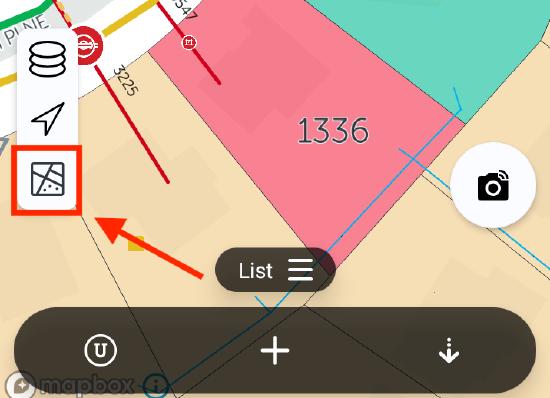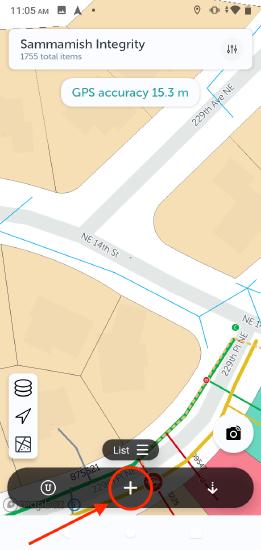Android Mobile App
The Unearth mobile app on Android is the perfect pairing to the Unearth web app, and provides many benefits:
- Optimized for mobile devices - the Unearth app refines work on mobile devices, allowing you to precisely draw and place assets on the map using a mobile device.
- Use GPS to your advantage - directly navigate to an asset, connect to GPS devices such as Trimble to gather data with precise accuracy, or use the Quick Capture feature to immediately take a photo and have it geolocated to the place it was taken.
- Collect data even when there is no internet connection using Offline Mode - Offline mode is activated when an internet connection is not available. Data can still be gathered, and as soon as the internet connection is restored, all changes and additions will be synced to the cloud and visible on all devices.
In this article, you'll learn how to download and navigate the Unearth App, add assets and information, and use offline mode.
Download and Navigate the Unearth App:
- Search in the Google Play Store for "Unearth App," and then download it to your device.
|
 |
- Open the app and login using your Unearth login credentials, or, if you are a Procore user, you can select the "Sign in with Procore" option to login using your Procore credentials.
- If you've forgotten your password, select "Forgot Password?" above the password text field to be sent a password reset email.
|
 |
- You will be first taken to the “Portfolio” page where you will see a list of all the projects you have access to. Use the search bar at the top to find a particular project.
- If you don't immediately see the project you are looking for, give the app a moment to load in all the projects - if you have access to many projects, it can sometimes take a moment to load the full list. Then, try searching again.
|
 |
- Tap a project to open it.
- The map will appear at the top half of the screen, and the “List” will appear at the lower half.
The list is the mobile equivalent to Table View, where you can display all the assets currently in the project. Minimize it by swiping down, or fill the screen by swiping up. After minimizing, click “List” to reopen.
|
 |
- Apply filters to your assets using the filter button in the top right corner - next to the project name - to refine what is visible on the map and in the list.
The web app offers more extensive filtering options optimized for quality control work, while the app is geared towards simple filtering in the field.
|
 |
- Filtering options include:
- Quick Filters: filter based on commonly used properties, such as assets that have been "Assigned to Me."
- Filter based on asset type - click the arrow to expand an asset category and see all types within that category. Check/uncheck specific categories and types to narrow your results.
|
 |
- Clear filters by clicking “clear” to the immediate left of the filter button.
- If you ever feel that you're not seeing assets you expect to see, verify you have no filters added that may be hiding assets from view. Clear the filters if needed.
|
 |
- Display plan layers by clicking the “layers” button in the left menu bar.
|
  |
- Navigate to an asset using Google Maps by clicking an asset, tapping the 3 dots menu, and selecting "Navigate."
- Google Maps will automatically open, ready to start directions.
|
 |
- “Go to Current Location” by clicking the arrow icon in the left menu bar (you may need to approve enabling GPS on your device).
|
 |
- Change the basemap using the map icon in the left menu bar.
Typically the satellite basemap is the easiest for use in the field, however, the topo basemap can be useful in areas with extensive tree cover or limited visibility to better identify structures on the map.
|
  |
- Open the menu using the Unearth logo in the top left corner. From this menu, you can:
- Navigate back to the Portfolio
- View "People" to see the list of users on the project.
- Access your user profile
- Connect to a GPS device (see the dedicated Trimble article for detailed instructions on connecting a Trimble device).
- Access settings
- Sign out of your account
|
 |
Adding Assets and Information:
- Click the “+” menu in the bottom center.
|
 |
- Then, select the tool you’d like to add the the map.
|
 |
- A target circle will appear in the center of the screen. Pan the map or zoom with a two finger pinch to the area you’d like to add the asset. Once the target circle is where you’d like to place the point, click “Add Point.”
|
 |
- If it’s a line or polygon tool, you will be prompted to place additional points to complete your shape. Click “Done” once all points have been placed to complete the line or polygon.
|
 |
- The asset form will open where you can then fill out the form, add comments, view or add linked assets, or evaluate the asset geometry.
|
 |
- After the asset has been added, you can click on an asset from the list to pan the screen to that asset’s location and open up the form. The asset forms can also be opened by tapping the icon on the map.
|
 |
Adding Photos:
- Quick capture a photo using the camera icon in the lower right corner.
|

|
-
- Press and hold the camera icon to preview, release to take the photo.
|

|
-
- Connect to GPS - either instruct it to use your Android's GPS, or connect to an external GPS device.
-
- Your photo will immediately appear on the map where it was taken.
|

|
Offline Mode
|
If you're in an area with poor cellular reception, the Unearth Mobile App will move you into Offline Mode. This mode allows data to be collected without an internet connection and synced with the project once a connection is restored.
- When offline mode is active, it will be indicated through a text banner under the project name. When offline, assets added will show in the list with a black cloud icon - indicating they have not yet synced to the project.
- Once online, these assets will sync - a text banner will report that the assets are syncing, and once synced, assets will show a white cloud with a checkmark.
- Keep in mind that there may be a slight delay between connection being regained and the cloud icon disappearing.
|
 
 
|
If you run into any issues or have any questions, please reach out to us at unearthsupport@procore.com.
Revised April 2023


























